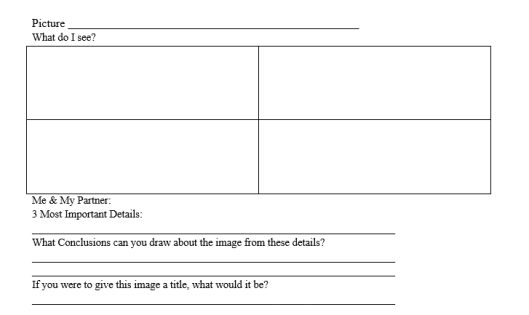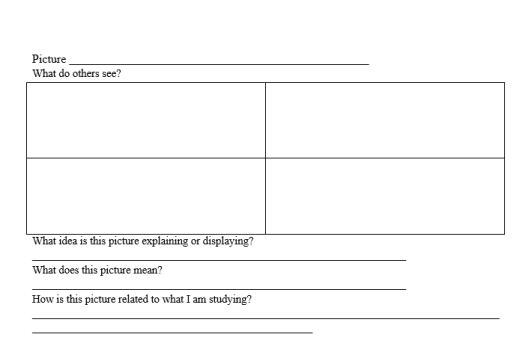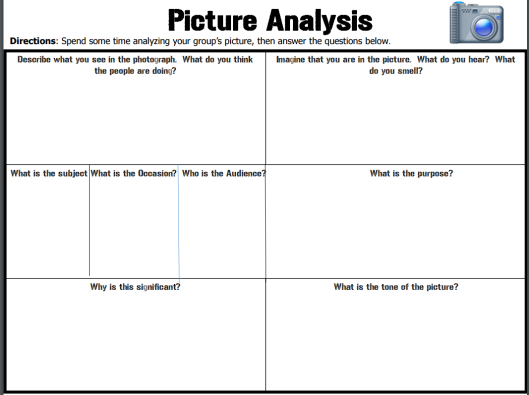As educators, we are always looking for new ways to approach our content and engage our students. A few weeks ago, the FJCC had the pleasure of providing professional development to teachers in Highlands County, a small rural county here in Florida very similar to where your humble blog host spent much of his early career. While there, I had the chance to speak with Holly Ard. Holly basically functions as the social studies specialist in the district while still teaching her own classes, and does excellent work.
One of the most difficult tasks for students to do, particularly at the lower grades, is to interpret primary sources, especially visual sources. While we stress the importance of primary sources, we often fail to actually provide teachers or students with the tools necessary to use them! This, in a time when disciplinary literacy has re-emerged as an important element of social studies teacher education thanks in part to the C3 Framework. Holly has attempted to address this issue by integrating a Picture Analysis Strategy. The strategy she uses is aimed at students of differing ability levels, and in talking with her, it seems to work well in engaging students with somewhat difficult content!
Working with partners, students individually break down the image, using the guide below. Note that the four ‘boxes’ represent the four quadrants of the image, a popular approach for image analysis. Having students create a title for the image does a nice job getting to the Common Core/Florida Standards expectation that students should be able to summarize text of all kinds. What else is a good a title than a really short and really strong summary of text?

Another way to approach image analysis is seen below. This version of the analysis template can be done with a partner or individually. I appreciate how it seeks to have students connect it directly to what they are learning. Relations between content and context is important.

I especially love this version of the picture analysis activity, which may be most useful for paintings or photographs of a perhaps persuasive bent.

Thanks, Holly, for sharing these approaches. We look forward to more goodness from you!
By the way, if you are looking for resources in Civics or History that can help kids with primary sources, I encourage you to check out the Stanford History Education Group!



